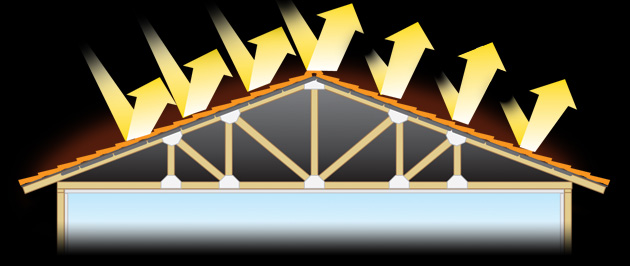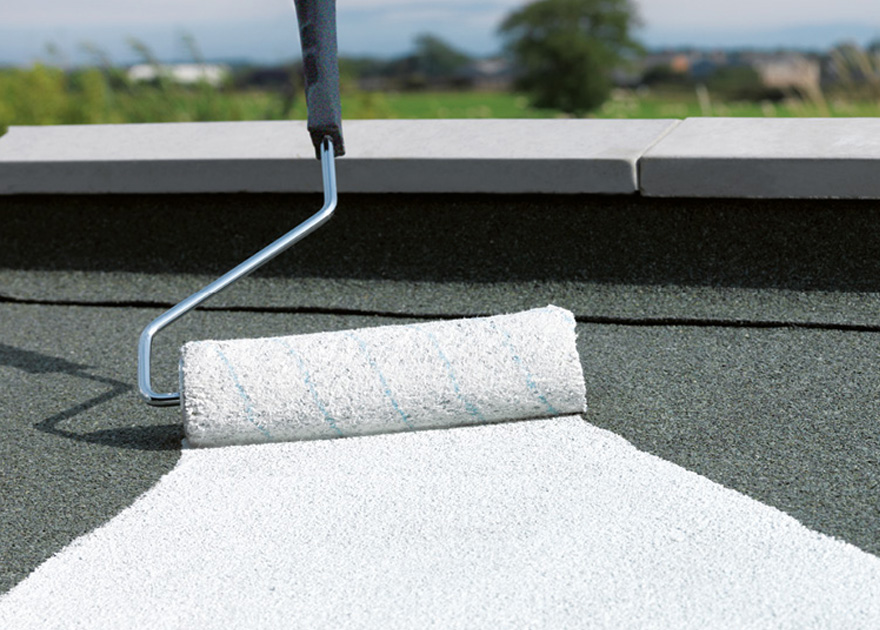What is the solar reflective coating? What is it made from? What is the use of it? Is it necessary?
How do I make my roof heatproof? Is it advantageous? Are there any negatives? These are all your questions; we hear you loud and clear, and we shall always answer!
Solar reflective coating
These paints (or coating, whichever you prefer) reflect the sunlight from flat roof surfaces and stop the heat from damaging the roof.
Since you are interested, the paints mentioned below have the best solar reflection properties:
- Kool-Roof Elastomeric coating
- Energy Guard Cool Roof paint
- Cool Roof Coating
What are the main components used in it?
Most of them use a binder like bitumen, organic or inorganic polymer.
Other additives (such as glass, crystal, or glitter) and pigments like titanium dioxide or dispersed aluminum. The resulting product is a reflective aluminum surface.

Pros
- The solar coating keeps your roof from getting damaged by sunlight and UV rays. Sounds like something you would use in commercial buildings or for your workplace. That’s because it is!
- It prevents heat from gathering in your house and keeps it out. This means you have suffocation and heat-free houses during the summer!
- This also prevents any fungal growth on your roofs. So that is another plus!
- It is renewable and has a lifespan of 12-15 years. That is twice the life of your average paint.
- Since it prevents heat from getting in, you also save on those air conditioning costs.
- You don’t need any special method of application. You can apply it like any normal paint.
- This paint applies to different surfaces, like how a chameleon blends in with its surroundings.
Cons
Now, of course, after all these lovely benefits, it is only fitting that we also inform you of the things that might put you off. So, let’s get right into it!
a. Start with the one question people mostly ask when encountering something that sounds too good to be true.
The price! And it is as well as you would expect from this above-average paint. It is more expensive. Not VERY expensive, mind you, only somewhat expensive.
Considering it will save quite a bit on air conditioning and last much longer than your average paint, the price might be worth it.
b. Sadly, after preaching about the paint’s ability to reduce heat in your houses above……it only reduces the heat by 15%……
Yes, we are aware we made ourselves look like fools, but in our defense, when the heat is boiling your house, even 15% sounds like a heaven-sent, even if there is not much difference.
c. Now, here comes the old classic environment or seasonal changes. While this is great for your houses during the summer, it’s not the greatest for winter.
Considering its main function is to reflect heat, heat won’t be able to gather in winter at all.
So, if you want to apply this to your roofs, you should also be ready for cold homes during winter.
d. Another point we might add is that in places with snowy winters, the snow will not help melt the snow off your roofs, so get your snow blowers and get that off before your roof ends up buried under the weight of a lot of snow.
Other ways to reduce heat
There are, of course, other ways to help with the heat besides solar reflective paint.
- Glass roofs!….. I only said other ways to reduce heat. Not all suggestions are for your house alone.
- No one is a stranger to tiled roofs, whether they have it themselves or not.
- Now, this depends on your tastes! Rooftop gardens! It feels like a novelty to have them, even to us. But this might not be for you if you are not a green thumb,
- Window tinting may also sound familiar.
Did you find this information helpful? Did you get the answers you were looking for?
We sure hope so! Being a genie of knowledge is no joking matter; if our knowledge isn’t shared, we get many headaches.
So keep asking those lovely questions, no matter how small, so that we can eliminate the headaches by sharing!

Arthur is a skilled roof worker with over 10 years of experience in the industry. He started his career as an apprentice and worked his way up to become a foreman.
When he’s not working on roofs, John enjoys with his family or writing posts. He is also a passionate cyclist.

